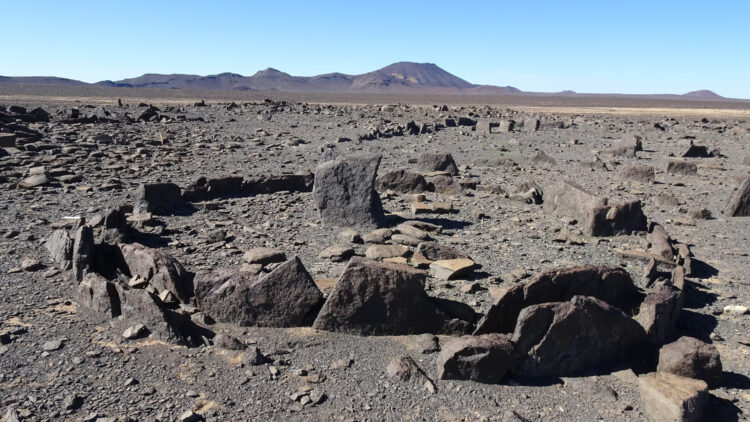Archaeological findings paint a vivid picture of ancient life. Even something as simple as structures, artifacts, and stone tools can provide significant insights into the daily routines, cultural practices, and social structures of civilizations that lived before us. In Saudi Arabia, a group of researchers has unearthed a remarkable find: stone circles that date back to an astonishing 7,000 years.
Unraveling the mystery of the Arabian stone circles
While conducting aerial surveys northwest of the Middle Eastern country, the Australian-led team made a huge discovery: a series of large stone circles, each meticulously arranged, located in the Harrat ‘Uwayrid lava field near the city of AlUla. A total of 345 circles were identified.
Excavating the site, the team discovered that the circles varied in diameter from 13 to 26 feet, and each contained at least one standing stone in their center. Upon closer inspection, they also found remnants of stone walls and one entranceway, which suggested to them that these structures once served as dwellings.
Team leader Jane McMahon elaborates: “These buildings… are formed by two concentric rows of large stones placed end-to-end in a circle. We theorize [that] the space created between the two rows of stone acted as a foundation for timber posts wedged between the rows to support the dwelling’s roof. Another slab in the center supported a central timber post lashed to it.
As the excavation continued, the team began to unearth additional artifacts that gave a rich picture of the lifestyle of the ancient people who once inhabited this region.
Excavation uncovers profound insights into the daily lives of early humans
Up until the discovery of these stone circles, little was known about the community who populated the lava field during the early Neolithic period, which saw the emergence of architecture characterized by round structures. Now, the team was able to piece together their history.
These dwellings were primarily sites of shelter and domestic life. Five hundred pounds of basalt stone tools were found, highlighting the occupants’ skills in hunting and food preparation. The presence of animal bones—belonging to cattle, sheep, and goats—indicated a mixed economy, whereby both wild and domesticated species were integral to the community’s livelihoods. Animal skins or stones were likely used to construct the roofs.
Additionally, rectangular structures known as “mustatil” (the Arabic term for “rectangle”) that were located near these dwellings are thought to have served a ritualistic purpose. This means that they could have been used for sacrificing cattle.
Also found were seashells originating from the Red Sea, located 75 miles to the west, indicating that these people engaged in long-distance trading and were connected with distant communities in modern-day Jordan, Palestine, and Syria.
This discovery reshapes our understanding of early human culture
According to McMahon, this community existed prior to the establishment of farming practices. Nevertheless, they were able to cultivate wild plant species on a landscape less arid than it is today.
These people were also inherently nomadic. However, this doesn’t mean that they forgot the sites they inhabited, such as the one at Harrat ‘Uwayrid.
“These people spent enough time at each site to justify the time and effort required to source and manipulate basalt blocks weighing up to one ton each,” McMahon says. “This suggests they returned to these locations time and again for hundreds of years.”
All in all, the discovery of these stone circles has deepened our understanding of Neolithic life in Saudi Arabia. It highlights the sophistication and adaptability of early communities in the region. Resultantly, the finding paves new ways for research into the lives of our ancient ancestors.

